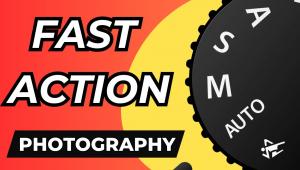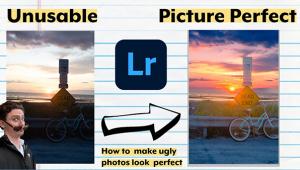Help!
Here Is A Quick Tip List On Letters For The HELP! Desk:
Please confine yourself to only one question per letter. Both postal letters and e-mails are fine, although we prefer e-mail as the most efficient form of communication. Send your e-mail queries to editorial@shutterbug.com with Help in the subject header and your return e-mail address at the end of your message. Although we make every effort, we cannot promise to answer every HELP! letter.
When sending a response or suggestion that refers to a published letter please include the month and page of the original question.
All postal letters to HELP! must be accompanied by a stamped, self-addressed envelope to be considered for reply. We will respond to e-mail queries with an e-mail.
6x6cm Projectors
After reading a recent reader’s inquiry (October, 2010, issue) about finding a 6x6cm slide projector, two gentlemen wrote to say they had such a projector available. We have forwarded contact information from each to the reader and we appreciate their taking the time to contact us. The readers are S. Wertman and R. Judelson. Thanks!
Two Suggestions
I always enjoy reading the HELP! answers. However, I do have comments about the replies in the November, 2010, issue. First, Mr. Porter’s question about sync speeds. Mr. Porter should be alerted to the fact that cameras with focal plane shutters are limited to a maximum shutter speed when in sync with electronic flash. In the case of the D40, it does sync with flash at any speed up to 1⁄500 sec. Many SLR cameras are limited to 1⁄250 sec or slower. The use of any shutter speed faster than 1⁄500 sec will result in a picture having an exposure of less than the total capture area. The second comment is to Mr. Padgett. In using black electrical tape as a light-blocking device, be careful, it is not opaque or at least I have never found one that is totally opaque. It will let light through. In direct sunlight, I am certain that this tape will allow a small amount of light to enter the camera.
Dr. Robert C. Wiseman, Professor
Industrial Tech/Booth Library
Eastern Illinois University
Thanks for commenting and correcting the record on those replies.
Macro Tips
Q. I enjoy outdoor macro photography more and more and think it’s time I got a better tripod (and head, of course) to make things a little easier and get a little lower, etc. I need help deciding on a specific model because I don’t live in a major metro area where I can make a hands-on choice at a friendly retailer and every forum member and blogger have their own favorites. Any specific help would be appreciated.
Gil Chojnacki
via e-mail
A. I posed your question to a friend who does quite a bit of macro work and we both believe you should consider a ringlight flash or LED ringlight to properly illuminate your small subject to use the camera handheld. Some of the more broadly adjustable tripods, such as the Benbo brand, with an articulated center column that can be easily maneuvered about to and fro in addition to simply up and down, can be helpful. The legs are independent so they can be adjusted in many directions or used very close to the ground. In addition, if you attach a separate micro focusing rail onto the tripod ball head or tilt-top, you will have the added advantage of being able to make small, precise front to back movements of the camera while it’s attached to the tripod. Some versions of focusing rails allow you to make short movements in any of four directions. I hope this offers some constructive ideas as to how you can equip yourself for macro photography.
Tamron Terms
Q. I have a Tamron AF28-200mm F/3.8-5.6 LD Aspherical (IF) Macro lens which I think is the one that preceded the XR version. I want to know the difference between the LD and XR versions but can’t find any information on Tamron’s website. The only reason I got this lens was for travel. Can you provide any information on the Tamron lens?
James Mcelroy
via e-mail
A. I found the information you seek at: www.tamron-usa.com. First, after choosing “Photographic Lenses” on the opening page, click on the heading at the top left labeled “All-In-One Zooms.” Toward the bottom of that page (after descriptions of Tamron lenses offered in this category), you will find detailed explanations on various terms used to describe the features found in these lenses. For instance, LD stands for Low Dispersion glass elements which help reduce chromatic aberration, a problem often found at longer telephoto focal lengths. XR stands for Extra Refractive index glass that bends light rays at a steeper angle which allows the actual length of the lens to be shorter, resulting in a smaller and lighter lens without the need to reduce the lens speed. This type of glass also upgrades the image quality. Considerably more detailed definitions of Tamron lens terminology can be found there.
































